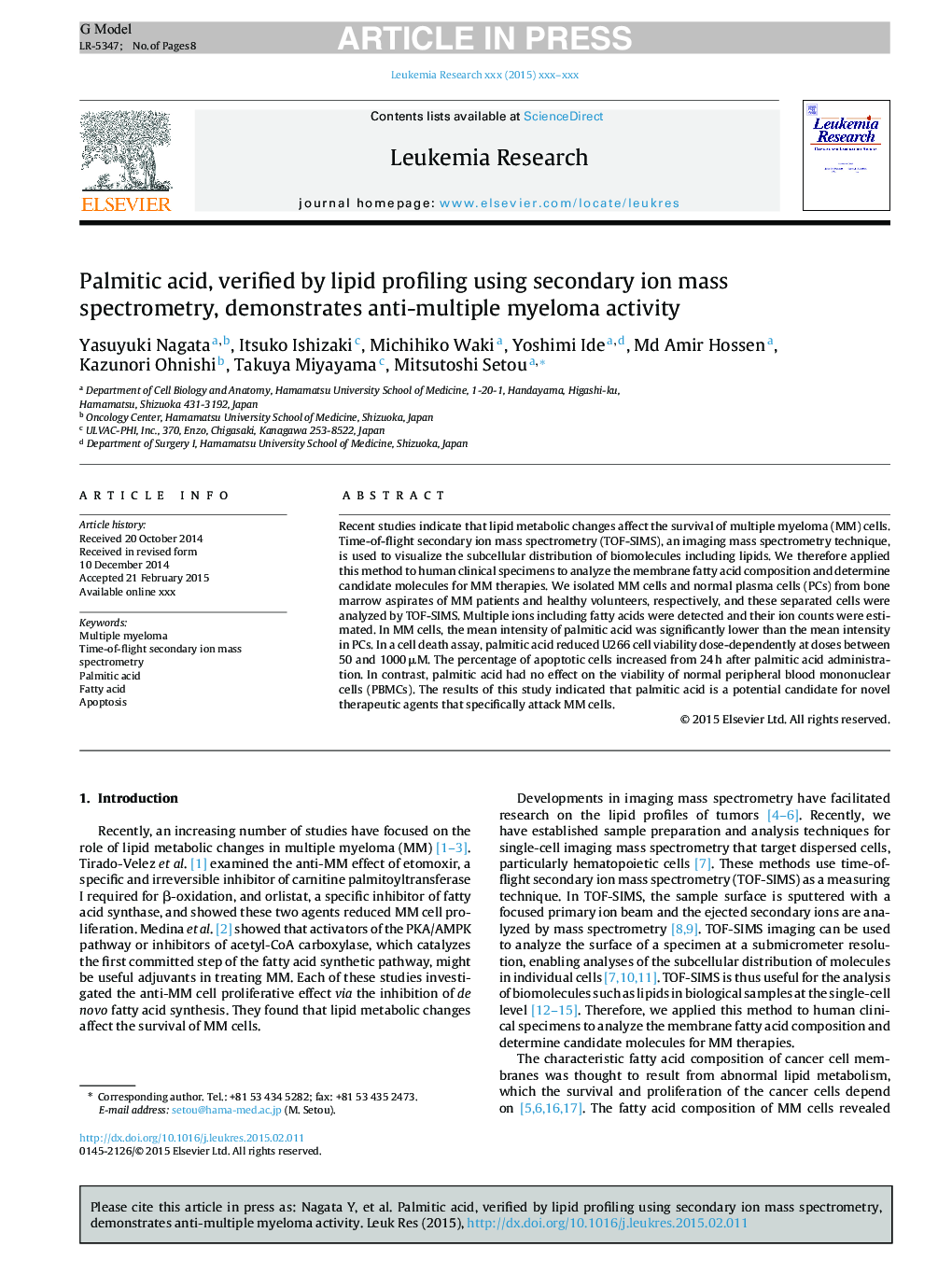| Article ID | Journal | Published Year | Pages | File Type |
|---|---|---|---|---|
| 10908738 | Leukemia Research | 2015 | 8 Pages |
Abstract
Recent studies indicate that lipid metabolic changes affect the survival of multiple myeloma (MM) cells. Time-of-flight secondary ion mass spectrometry (TOF-SIMS), an imaging mass spectrometry technique, is used to visualize the subcellular distribution of biomolecules including lipids. We therefore applied this method to human clinical specimens to analyze the membrane fatty acid composition and determine candidate molecules for MM therapies. We isolated MM cells and normal plasma cells (PCs) from bone marrow aspirates of MM patients and healthy volunteers, respectively, and these separated cells were analyzed by TOF-SIMS. Multiple ions including fatty acids were detected and their ion counts were estimated. In MM cells, the mean intensity of palmitic acid was significantly lower than the mean intensity in PCs. In a cell death assay, palmitic acid reduced U266 cell viability dose-dependently at doses between 50 and 1000 μM. The percentage of apoptotic cells increased from 24 h after palmitic acid administration. In contrast, palmitic acid had no effect on the viability of normal peripheral blood mononuclear cells (PBMCs). The results of this study indicated that palmitic acid is a potential candidate for novel therapeutic agents that specifically attack MM cells.
Keywords
Related Topics
Life Sciences
Biochemistry, Genetics and Molecular Biology
Cancer Research
Authors
Yasuyuki Nagata, Itsuko Ishizaki, Michihiko Waki, Yoshimi Ide, Md Amir Hossen, Kazunori Ohnishi, Takuya Miyayama, Mitsutoshi Setou,
